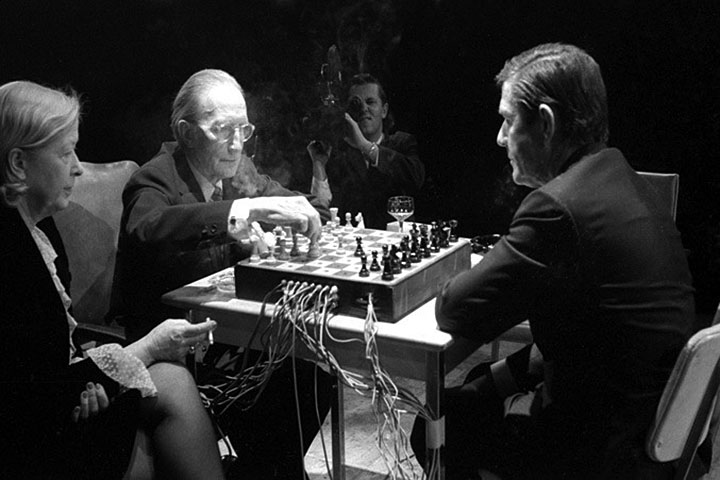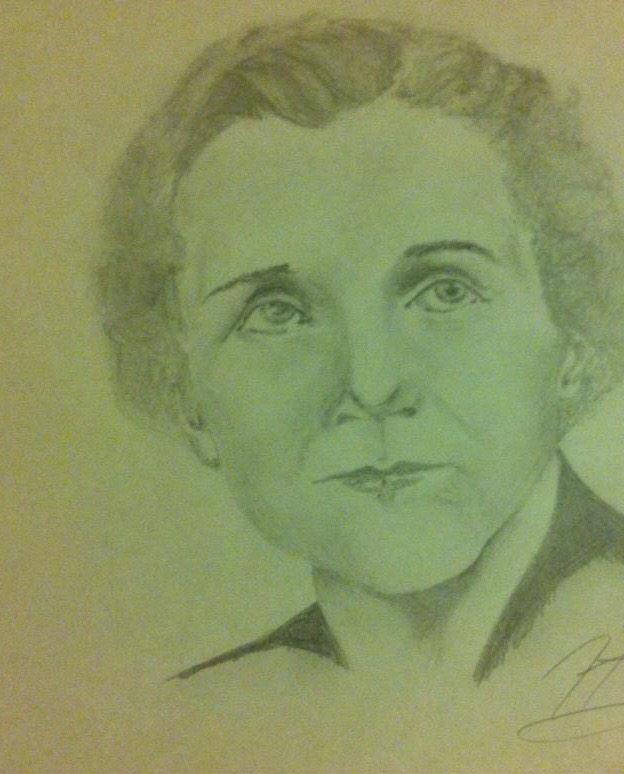
Postage stamp honoring Cesar Chavez in 2003. “The stamp features a portrait of Cesar against a background of empty grape fields. It was painted by illustrator Robert Rodriguez from a 1976 photo,” according to the Cesar Chavez Foundation.
President Obama declared March 31, 2015, César Chávez Day, as he did in 2014. Here’s the press release version of the proclamation.
For Immediate Release March 30, 2015
Presidential Proclamation — Cesar Chavez Day, 2015
CÉSAR CHÁVEZ DAY, 2015
– – – – – – –
BY THE PRESIDENT OF THE UNITED STATES OF AMERICA
A PROCLAMATIONFor more than two centuries, the arc of our Nation’s progress has been shaped by ordinary people who have dedicated their lives to the extraordinary work of building a more perfect Union. It is a story of achievement and constant striving that has found expression in places where America’s destiny has been decided — in Seneca Falls, Selma, and Stonewall, and in the golden fields of California where an American hero discovered his mighty voice. Today, we honor César Chávez and his lifetime of work to make our country more free, more fair, and more just, and we reaffirm the timeless belief he embodied: those who love their country can change it.
A son of migrant workers and a child of the Great Depression, César Chávez believed every job has dignity and every person should have the chance to reach beyond his or her circumstances and realize a brighter future. When no one seemed to care about the farm workers who labored without basic protections and for meager pay to help feed the world, César Chávez awakened our Nation to their deplorable conditions and abject poverty — injustices he knew firsthand. He organized, protested, fasted, and alongside Dolores Huerta, founded the United Farm Workers. Slowly, he grew a small movement to a 10,000-person march and eventually a 17-million-strong boycott of table grapes, rallying a generation around “La Causa” and forcing growers to agree to some of the first farm worker contracts in history. Guided by a fierce commitment to nonviolence in support of a righteous cause, he never lost faith in the power of opportunity for all.
As a Nation, we know the struggle to live up to the principles of our founding does not end with any one victory or defeat. After César Chávez fought for higher wages, he pushed for fresh drinking water, workers’ compensation, pension plans, and protection from pesticides. He strove every day for the America he knew was possible. Today, we must take up his work and carry forward this great unfinished task.
When immigrants labor in the shadows, they often earn unfair wages and their families and our economy suffer — that is one reason why we have to fix our broken immigration system and why I keep calling on the Congress to enact comprehensive immigration reform. We need to continue to defend the collective bargaining rights countless individuals have fought so hard for and ensure our economy rewards hard work with a fair living wage, paid leave, and equal pay for equal work.
César Chávez knew that when you lift up one person, it enriches a community; it bolsters our economy, strengthens our Nation, and gives meaning to the creed that out of many, we are one. As we celebrate his life, we are reminded of our obligations to one another and the extraordinary opportunity we are each given to work toward justice, equal opportunity, and a better future for every one of our sisters and brothers.
NOW, THEREFORE, I, BARACK OBAMA, President of the United States of America, by virtue of the authority vested in me by the Constitution and the laws of the United States, do hereby proclaim March 31, 2015, as César Chávez Day. I call upon all Americans to observe this day with appropriate service, community, and education programs to honor César Chávez’s enduring legacy.
IN WITNESS WHEREOF, I have hereunto set my hand this thirtieth day of March, in the year of our Lord two thousand fifteen, and of the Independence of the United States of America the two hundred and thirty-ninth.
[signed] BARACK OBAMA
No call for a flying of flags, but you may certainly fly your Old Glory, if you wish.
More:



 Posted by Ed Darrell
Posted by Ed Darrell 





















